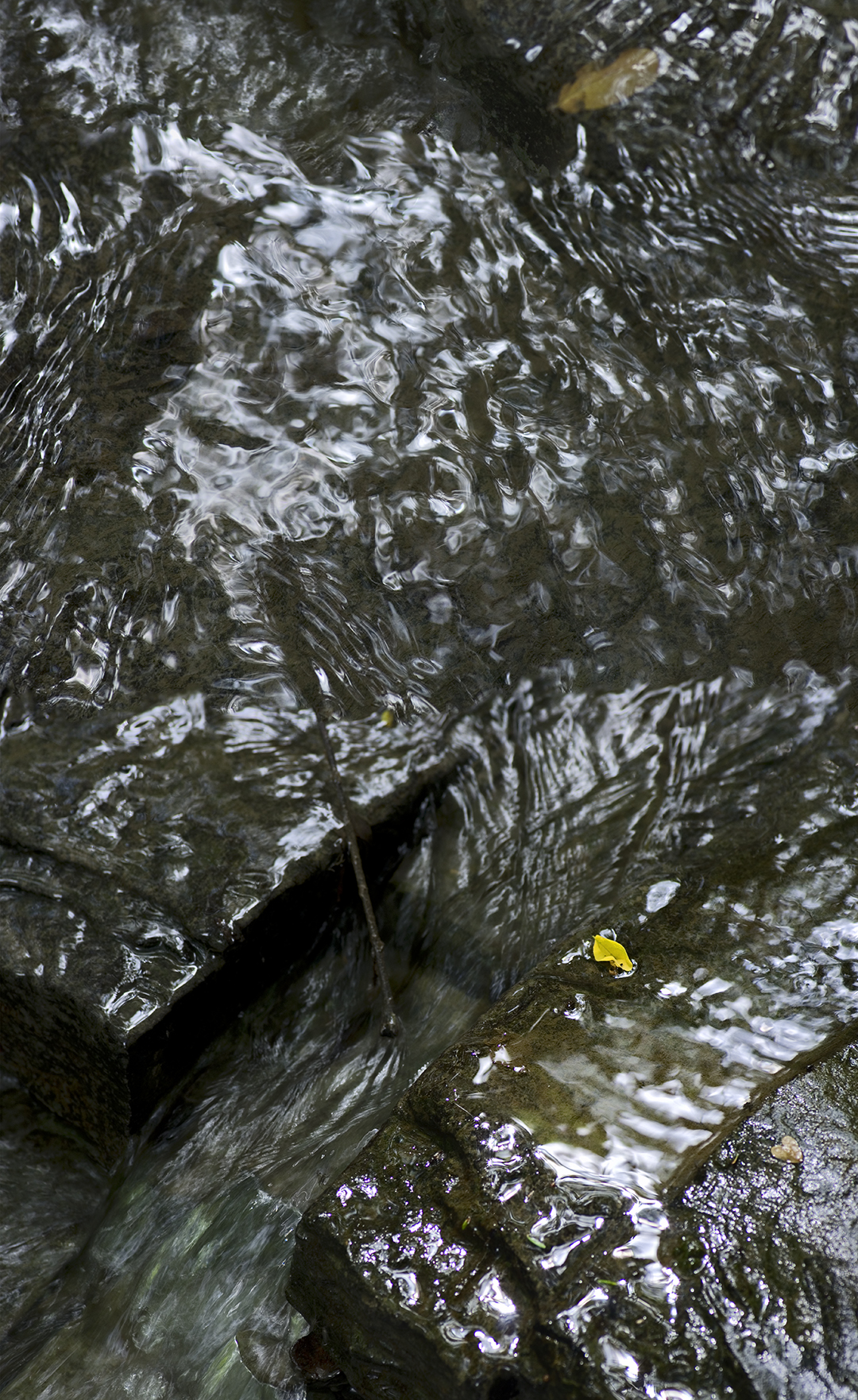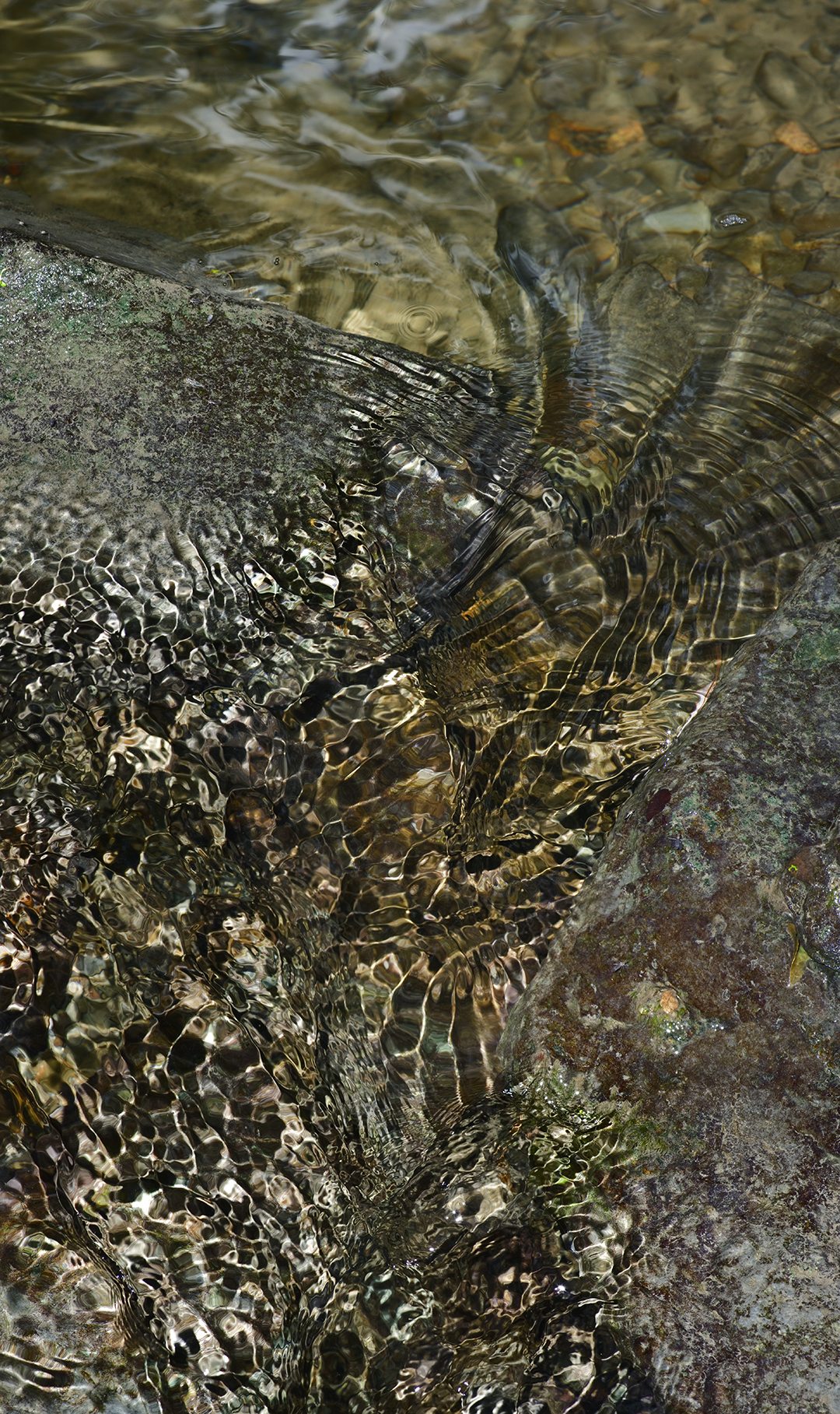These images were made on the early morning hours of June 17 at a little tributary of Taughannock creek, not far from the village of Trumansburg where Kim and I live. Once far enough from whatever little traffic there was at that time on Rabbit Run road, I was enveloped in a profound silence of which the late Spring song of birds and the rush of water were only part. Because there was nothing determining my presence, and because seeing was the essential business at hand, there was hardly any self-reflection. Space opens and beauty flowers when silence meets silence.
The images placed at the beginning of this series are intended to give a general sense of place for those who do not know this area. The rest are mostly depictions of the flow of water, a subject that I never tire of because of its inherent beauty, and the way it points, metaphorically, to the indivisible flow of life —the ever-unknown, the unthinkable.
All these images comprise from three to nine separate exposures made while panning the camera up and down, or from side to side. Each exposure depicts a different section of the subject of interest, and they are later properly aligned and stitched together in the computer to make a single image. The use of flash adds a further complication to this procedure because there is no way, and no time, to control the distance from flash to subject, let alone to adjust flash output to match the reflective quality of the particular section being photographed. As a result, the exposure value of most individual shots has to be changed in post production so that the final image looks evenly lit.
There are other difficulties in photographing running water while precariously balancing on the slippery streambed while managing a fairly heavy tripod and the flash on a metal bracket or on my left hand (I wish I had more than two upper extremities to make all the adjustments and movements that are necessary): Colors tend to be overly saturated, there are generally too many hot spots and not enough tonal balance. However, I feel the benefits are often greater than the drawbacks. Certain details and colors, invisible to the naked eye, become apparent affording a rare insight into the orderly but undecipherable riot of the rushing stream.
Each image represents a compromise good enough, I hope, to show you some of what the little creek had to offer that morning and, much more than that, to share a glimmer of our mysterious, witnessing presence in the stream of life and death.
If you click on the first image of the series, you will find an arrow on the right of the expanded image that will take you directly to the rest.





























